Subgenus Muscadinia Higher classification Grapevines | Order Vitales Rank Species | |
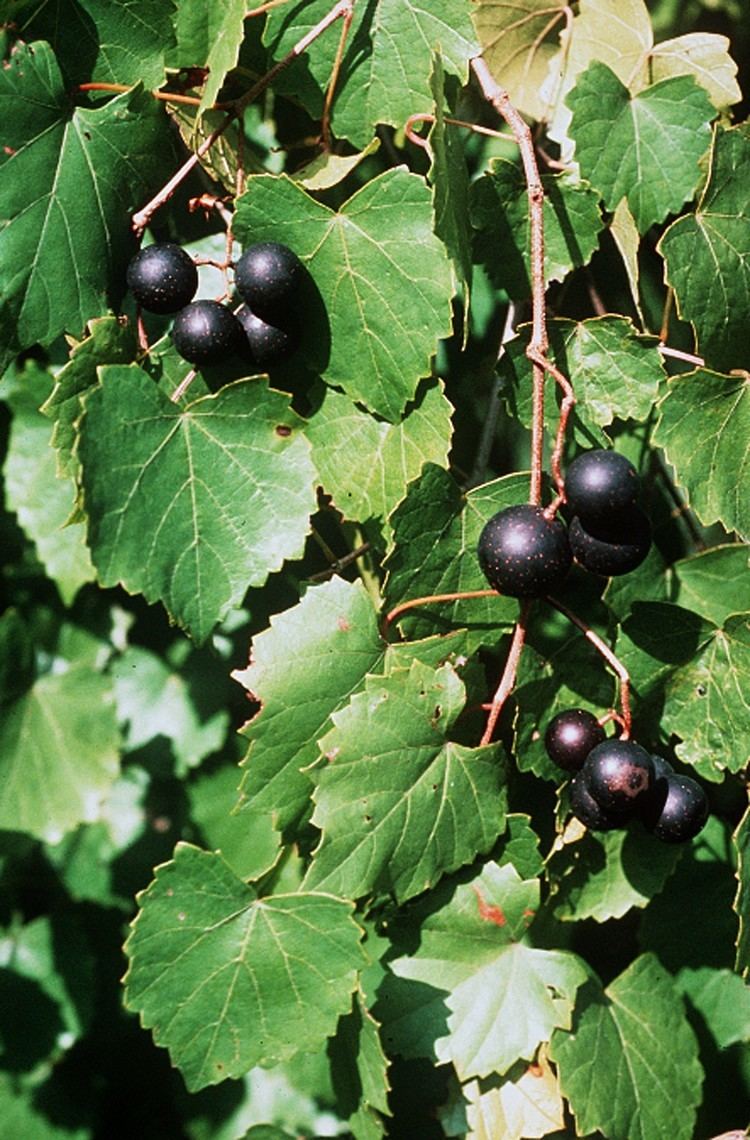 | ||
Similar Scuppernong, Grapevines, Vitis labrusca, Concord grape, Vitis riparia | ||
Vitis rotundifolia, or muscadine, is a grapevine species native to the southeastern and south-central United States from Florida to Delaware, west to eastern Texas and Oklahoma. It has been extensively cultivated since the 16th century. The plants are well adapted to their native warm and humid climate; they need fewer chilling hours than better known varieties and they thrive on summer heat.
Contents
Muscadine berries range from bronze to dark purple to black in color when ripe. However, many wild varieties stay green through maturity. They have skin sufficiently tough that eating the raw fruit often involves biting a small hole in the skin to suck out the pulp inside. Muscadines are not only eaten fresh, but also are used in making wine, juice, and jelly. Muscadine grapes are rich sources of polyphenols.

In a natural setting, muscadines are important plants for improving wildlife habitat by providing cover, browse, and fruit for a wide variety of animals.
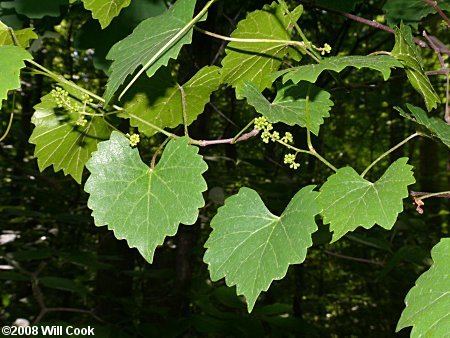
Taxonomy
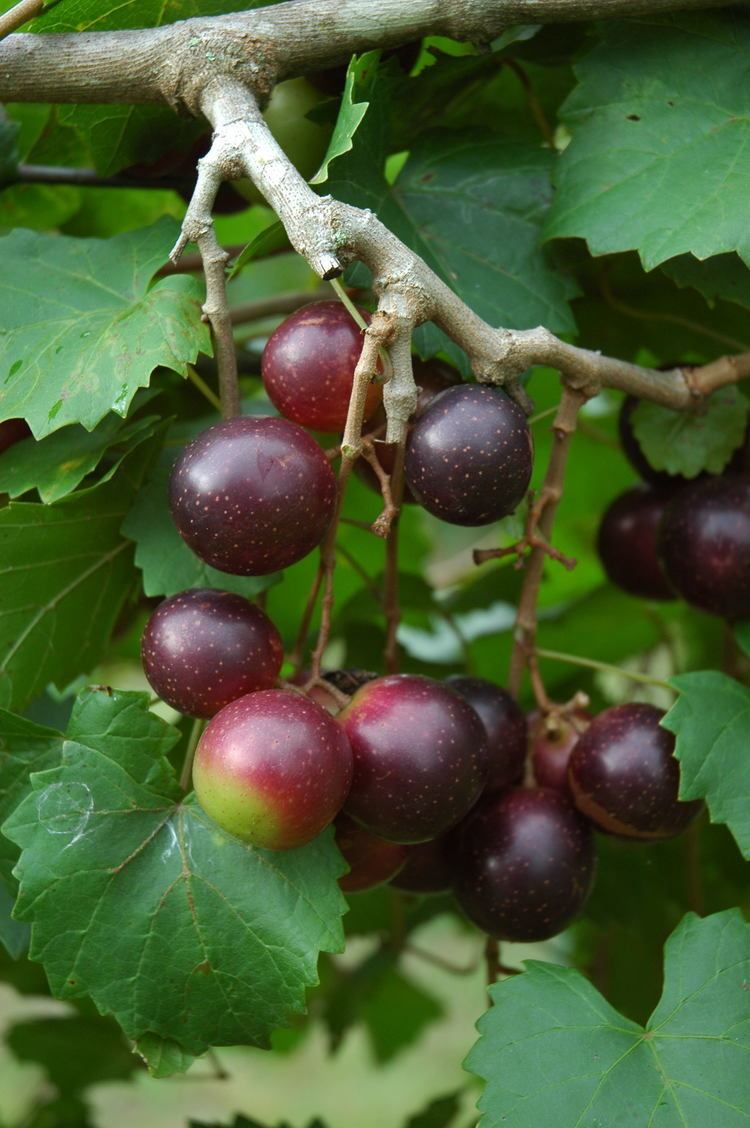
Although in the same genus Vitis with the other grapevine species, muscadines belong to a separate subgenus, Muscadinia (the other grapevine species belong to subgenus Euvitis), and some have suggested giving it standing as a genus of its own. Some taxonomists have also suggested splitting two additional species off from Vitis rotundifolia, Vitis munsoniana and Vitis popenoei. All have 40 chromosomes, rather than 38, are generally not cross-compatible with Euvitis species, and most hybrids between the subgenera are sterile. A few, however, are at least moderately fertile, and have been used in breeding. A commercially available Euvitis x Muscadinia hybrid is the Southern Home cultivar.
Cultivars
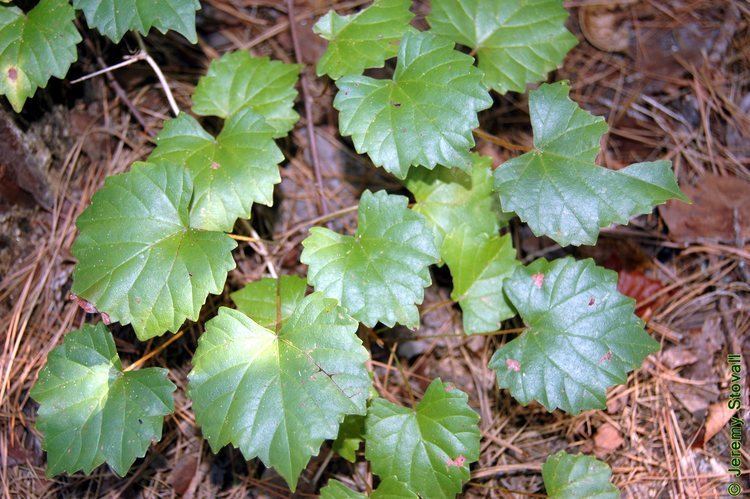
There are over 300 muscadine cultivars grown in the Southern states. These include bronze, black and red varieties and consist of common grapes and patented grapes.
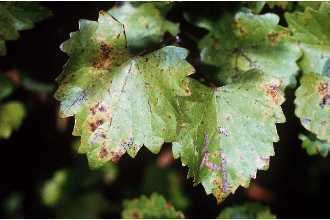
Unlike most cultivated grapevines, many muscadine cultivars are pistillate, requiring a pollenizer to set fruit. A few, however, such as 'Carlos' and 'Noble', are perfect-flowered, produce fruit with their own pollen, and may also pollinate pistillate cultivars.
Cultivars include Black Beauty, Carlos, Cowart, Flowers, Fry, Granny Val, Ison, James, Jumbo, Magnolia, Memory (first found on T.S. Memory's farm in 1868 in Whiteville, NC), Mish, Nesbitt, Scuppernong, Summit, Supreme, Thomas, Produced by the University of Florida, the cultivar, 'Southern Home', contains both muscadine and subgenus Vitis in its background.
Crops can be started in 3–5 years. Commercial yields of 20–45 tonnes per hectare (8–18 tons per acre) are possible. Muscadines grow best in fertile sandy loam and alluvial soils. They grow wild in well-drained bottom lands that are not subject to extended drought or waterlogging. They are also resistant to pests and diseases, including Pierce's disease, which can destroy other grape species. Muscadine is one of the grape species most resistant to Phylloxera, an insect that can kill roots of grapevines.
Wine
Muscadines have been used for making commercial fine wines and port wines dating back to the 16th century in and around St. Augustine, Florida. Today, vineyards throughout the Southeast produce muscadine wines of various qualities.
The typical muscadine wine is sweet because vintners traditionally add sugar during the winemaking process; the wine is often considered a dessert wine although some drier varieties exist. The term scuppernong refers to a large bronze type of muscadine originally grown in North Carolina; it is also used in making wine, principally dry red table wine.
Appellations
Appellations producing Muscadine wines:
Nutrients
100 grams of muscadine grapes contain the following nutritional information according to the USDA:
Research
Consumer research indicates that the thick skins and variable in-season quality of fresh muscadine grapes are significant deterrents to retail acceptance.
Resveratrol and other polyphenols
As muscadine grapes are notable for their highly pigmented, thick skins in which the content of polyphenols is known to be high, there is active research interest to define these phytochemicals. One report indicated that muscadine grapes contained high concentrations of resveratrol, but subsequent studies have found no or little resveratrol in muscadine grapes.
Other muscadine polyphenols include:
The rank order of total phenolic content among muscadine components was found to be seeds higher than skins higher leaves higher than pulp.
